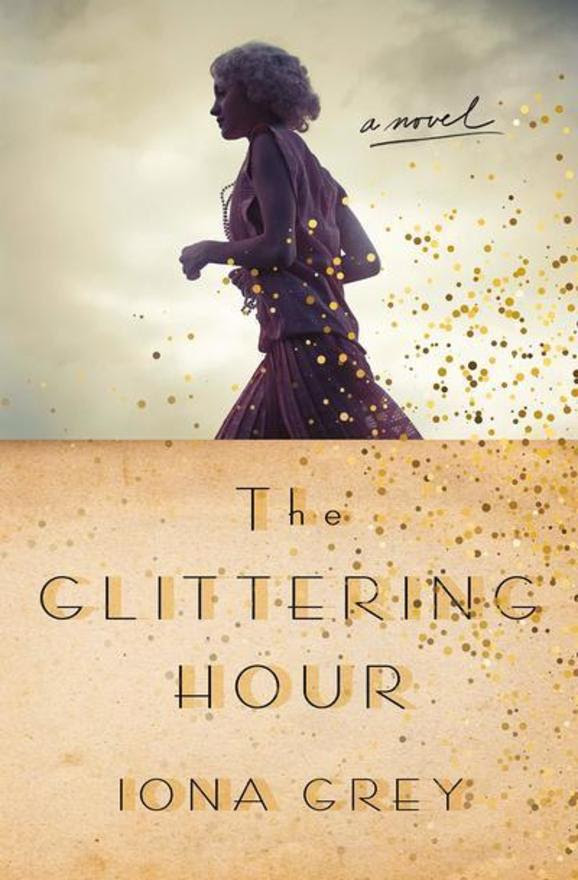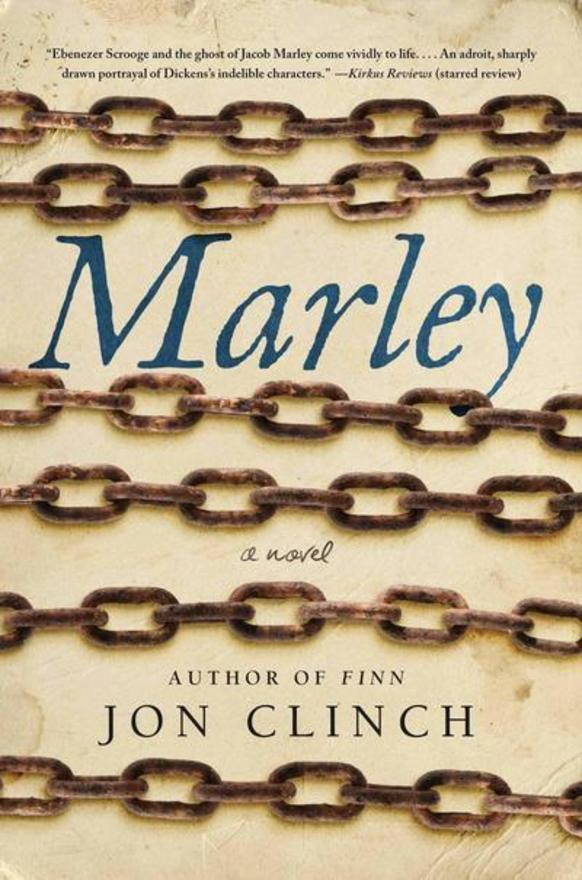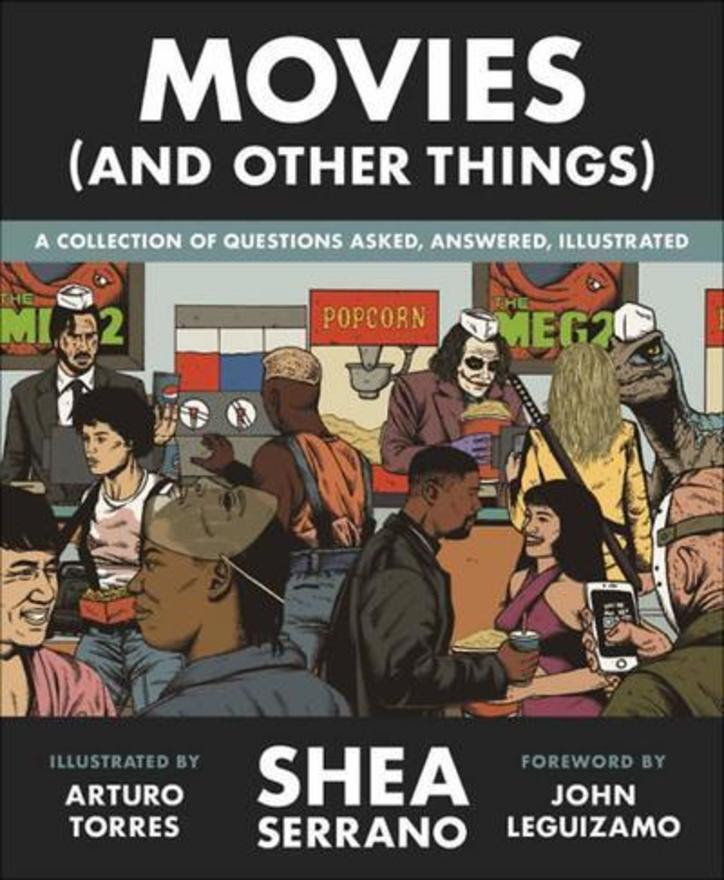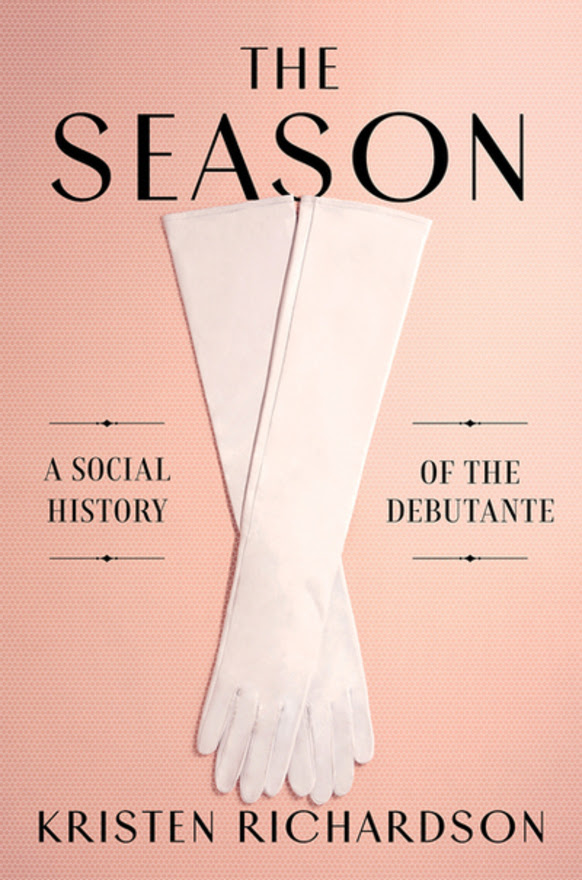Librarian's Pick
Here's what our librarians are reading lately.Librarian’s Pick: The Forest Feast Mediterranean – Erin Gleeson
 “It’s hard not to feel a little bit envious of Erin Gleeson. The bestselling cookbook author spent three months traveling with her family through France, Portugal, Spain and Italy to research The Forest Feast Mediterranean: Simple Vegetarian Recipes Inspired by My Travels. It’s as gorgeous as her previous books, awash in watercolor illustrations and bright vegetarian dishes that leap off the page into your sunniest kitchen dreams. Images of Gleeson and her family star alongside scenic shots from the region that inspired this book, but of course the real heroes are its 100 recipes, which include mouthwatering salads, decadent pastas and small shareables like caponata, a burrata bar, bruschetta, tartines, tartlets, tortilla espanola and pintxos, which are appetizers on long toothpicks, unique to the Barcelona bar scene. Best of all, there’s a travel guide in the back in case you’re hungry to follow in Gleeson’s picturesque footsteps—and you will be.”
“It’s hard not to feel a little bit envious of Erin Gleeson. The bestselling cookbook author spent three months traveling with her family through France, Portugal, Spain and Italy to research The Forest Feast Mediterranean: Simple Vegetarian Recipes Inspired by My Travels. It’s as gorgeous as her previous books, awash in watercolor illustrations and bright vegetarian dishes that leap off the page into your sunniest kitchen dreams. Images of Gleeson and her family star alongside scenic shots from the region that inspired this book, but of course the real heroes are its 100 recipes, which include mouthwatering salads, decadent pastas and small shareables like caponata, a burrata bar, bruschetta, tartines, tartlets, tortilla espanola and pintxos, which are appetizers on long toothpicks, unique to the Barcelona bar scene. Best of all, there’s a travel guide in the back in case you’re hungry to follow in Gleeson’s picturesque footsteps—and you will be.”
Librarian’s Pick: The Second Sleep – Robert Harris
 “We go 350-odd years further back in time for Robert Harris’ thriller The Second Sleep—to 1468, to be precise. Consider other terrific medieval mysteries as Umberto Eco’s The Name of the Rose or Ross King’s Ex-Libris, and get ready for an exceptionally intricate tale that will take you in unexpected directions and then pummel you when you get there. Cleric Christopher Fairfax is called upon to officiate at the interment of a parish priest. It’s a simple enough task: Write a few words of banal praise and read the appropriate scriptures to usher the man to his final resting place. But Fairfax doesn’t sleep well the night before and instead visits the dead man’s library, where he happens upon all manner of heretical books that have been banned by church and state alike. Contrary to his upbringing, training and better judgment, Fairfax begins to read. At this point in the review, I am torn between revealing any more or just letting the reader unearth surprise after surprise until they begin to get a glimmering of what is really transpiring here. So, after some consideration, I will just leave you with this quote: “the ultimate symbol of the ancients’ hubris and blasphemy, an apple with a bite taken out of it.” Chew on that for a while . . .”
“We go 350-odd years further back in time for Robert Harris’ thriller The Second Sleep—to 1468, to be precise. Consider other terrific medieval mysteries as Umberto Eco’s The Name of the Rose or Ross King’s Ex-Libris, and get ready for an exceptionally intricate tale that will take you in unexpected directions and then pummel you when you get there. Cleric Christopher Fairfax is called upon to officiate at the interment of a parish priest. It’s a simple enough task: Write a few words of banal praise and read the appropriate scriptures to usher the man to his final resting place. But Fairfax doesn’t sleep well the night before and instead visits the dead man’s library, where he happens upon all manner of heretical books that have been banned by church and state alike. Contrary to his upbringing, training and better judgment, Fairfax begins to read. At this point in the review, I am torn between revealing any more or just letting the reader unearth surprise after surprise until they begin to get a glimmering of what is really transpiring here. So, after some consideration, I will just leave you with this quote: “the ultimate symbol of the ancients’ hubris and blasphemy, an apple with a bite taken out of it.” Chew on that for a while . . .”
Librarian’s Pick: A Bookshop in Berlin – Francoise Frenkel
 “Like many Europeans who lived through World War II, Françoise Frenkel led an eventful life. A Polish Jewish woman born in 1889, she studied literature in Paris. In 1921, she opened a French bookstore in Berlin. She returned to Paris in 1939, fleeing the Nazis. She made several attempts to escape to Switzerland and eventually succeeded. But if Frenkel hadn’t written a memoir, she would likely be completely unknown. Rien où poser sa tête (No Place to Lay One’s Head) was published in Switzerland in 1945, sold a few copies and quickly sank into collective forgetfulness. Then a copy was found in 2010 at a sale for a French charity, and it’s now republished as A Bookshop in Berlin.
“Like many Europeans who lived through World War II, Françoise Frenkel led an eventful life. A Polish Jewish woman born in 1889, she studied literature in Paris. In 1921, she opened a French bookstore in Berlin. She returned to Paris in 1939, fleeing the Nazis. She made several attempts to escape to Switzerland and eventually succeeded. But if Frenkel hadn’t written a memoir, she would likely be completely unknown. Rien où poser sa tête (No Place to Lay One’s Head) was published in Switzerland in 1945, sold a few copies and quickly sank into collective forgetfulness. Then a copy was found in 2010 at a sale for a French charity, and it’s now republished as A Bookshop in Berlin.
It’s interesting the way a title can affect a reader’s perception of a book. The title No Place to Lay One’s Head draws attention to Frenkel’s personal hardships, to the terror and cruelty she encountered. There is plenty of suspense as Frenkel describes her brushes with disaster—but the title A Bookshop in Berlin instead emphasizes her improbable bookstore, illuminating a deeper truth about Frenkel’s experiences.
Like a bookstore, Frenkel’s memoir contains not one story but many. There is, of course, her own odyssey to safety—but there’s also the heroic tale of M. and Mme. Marius, Frenkel’s friends and saviors; the comedy of the glamorous refugee who hoodwinked the Germans into saving her son; the tragedy of the young man accused of murdering his wife; the melodrama of hardened prison guards; and ultimately, a story of liberation and redemption.”
Librarian’s Pick: The Worst Best Man – Mia Sosa
![The Worst Best Man: A Novel by [Sosa, Mia]](https://images-na.ssl-images-amazon.com/images/I/51My-Rxk0sL.jpg) “A wedding planner left at the altar? Yeah, the irony isn’t lost on Carolina Santos, either. But despite that embarrassing blip from her past, Lina’s offered an opportunity that could change her life. There’s just one hitch… she has to collaborate with the best (make that worst) man from her own failed nuptials.
“A wedding planner left at the altar? Yeah, the irony isn’t lost on Carolina Santos, either. But despite that embarrassing blip from her past, Lina’s offered an opportunity that could change her life. There’s just one hitch… she has to collaborate with the best (make that worst) man from her own failed nuptials.
Marketing expert Max Hartley is determined to make his mark with a coveted hotel client looking to expand its brand. Then he learns he’ll be working with his brother’s whip-smart, stunning—absolutely off-limits—ex-fiancée. And she loathes him.
If they can nail their presentation without killing each other, they’ll both come out ahead. Except Max has been public enemy number one ever since he encouraged his brother to jilt the bride, and Lina’s ready to dish out a little payback of her own.
Soon Lina and Max discover animosity may not be the only emotion creating sparks between them. Still, this star-crossed couple can never be more than temporary playmates because Lina isn’t interested in falling in love and Max refuses to play runner-up to his brother ever again…”
Librarian’s Pick: The Glittering Hour – Iona Grey
 “Set in London and alternating between 1926 and 1936, The Glittering Hour is the story of Selena Lennox. Having lost her beloved brother during World War I, Selena understands too well the brevity of life and intends to live every moment to the fullest.
“Set in London and alternating between 1926 and 1936, The Glittering Hour is the story of Selena Lennox. Having lost her beloved brother during World War I, Selena understands too well the brevity of life and intends to live every moment to the fullest.
Selena and her lively companions are collectively known as the Bright Young People. To the dismay of Selena’s staid, upper-class family, her world is an unending series of fast cars, beautiful dresses, wild parties, crazy games and the latest dances, all fueled by alcohol and drugs and documented by photographers. Then one night, Selena meets the totally unsuitable Lawrence Weston, a struggling artist from poor beginnings who bears his own grief. Their encounter will eventually open Selena’s eyes and force her to make a choice that will change their lives.
The Glittering Hour is an exceptional novel about choosing how to live amid powerful grief and true love. Iona Grey, author of Letters to the Lost, has written a moving story that makes readers feel bereft to leave Selena and Lawrence behind at the book’s end in the way that only the best novels can do. Grey’s eye for descriptive detail gives a sumptuousness to almost every scene, and the delicious recklessness of 1920s London comes alive on the page. She is also masterful at using flashbacks and letters to slowly tease out the influences and motivations of her characters—and those of an entire postwar generation.
For readers looking for a tremendously entertaining, emotionally charged story, look no further. The Glittering Hour is just the ticket.”
Librarian’s Pick: Cosy – Laura Weir

‘Homebodies are always in pursuit of an ideal: of a dream of quiet, of peaceful evenings in the bath or under blankets, of restorative reflection, of (as our friends across the pond term it) “cosy.” In Cosy: The British Art of Comfort, Laura Weir moves to take back the simple pleasures of a Sunday in one’s pajamas or a long evening walk, especially now that interior designers have savaged the Danish notion of hygge. There’s no need to whitewash your floorboards or purchase a sheepskin rug. After all, decorating all in white inevitably leads to more cleaning, when you could be relaxing under something woolen with a book and a nice piece of cheese instead. Gently dragging us back from the wild-eyed edge of consumerism, Weir reminds us that simply taking the time to cook a meal can be enough. Forget giving this one for Christmas, actually. Give it before. We’ll all need it.”
Librarian’s Pick: Marley – Jon Clinch
 “Before reading Marley, I dug out my Bantam Classic paperback of A Christmas Carol by Charles Dickens and reread it. As if I needed such an excuse: It’s one of my favorite books, and Ebenezer Scrooge’s story of greed and selfishness never gets old.
“Before reading Marley, I dug out my Bantam Classic paperback of A Christmas Carol by Charles Dickens and reread it. As if I needed such an excuse: It’s one of my favorite books, and Ebenezer Scrooge’s story of greed and selfishness never gets old.
I was equally excited to read Marley, which promised to deliver the untold origin story of Scrooge and his partner Jacob Marley’s sordid business. But whereas Dickens’ novel is ultimately uplifting—our stingy protagonist wholly embraces the lessons learned from ghostly visitations and immediately sets about amending his ways—Marley is anything but. It’s darkly haunting in its own way, but also devilishly fun reading.
There are good reasons for the heavy chains wrapped around Jacob Marley’s ghost when he visits Scrooge that fateful Christmas Eve, and author Jon Clinch spares no detail as he depicts Marley in this prequel as a harsh, uncaring, coldly calculating, deceitful individual, showcasing his malevolent influence on Scrooge. The novel follows the pair from their first meeting at Professor Drabb’s Academy for Boys in 1787—where Marley immediately extorts money from Scrooge—to Marley’s deathbed in 1836. Throughout, Marley’s obsession with money motivates every waking moment of his life. While Scrooge crunches the numbers (or cooks the books, if you will), Marley carries on the nastier businesses of cons, smuggling and slave trading, using various aliases and dummy corporations along the way, even going so far as to keep secrets (and cash) from Scrooge. Marley is, for want of a better phrase, more of a scrooge than Scrooge.
Clinch—who pulled a similarly remarkable feat with his first book, Finn, about the father of Huckleberry Finn—has successfully added a layer of depth and intrigue to Dickens’ beloved characters. Rereading Marley each Christmas may become as much of a tradition as rereading A Christmas Carol.”
Librarian’s Pick: Movies And Other Things – Shea Serrano
 “We all know one film aficionado who remembers bits and bobs about movies long after everyone else has forgotten them. This person can be tricky to shop for, as they’ve seen every movie already and have plenty of opinions about them. Enter Movies (and Other Things) by Shea Serrano, author of The Rap Year Book. Over the course of 30 essays, Serrano dives deep into topics that movie nerds love to debate, with a focus on famous films since the 1980s. Who are the members of the perfect heist movie crew? Who gets it the worst in Kill Bill?
“We all know one film aficionado who remembers bits and bobs about movies long after everyone else has forgotten them. This person can be tricky to shop for, as they’ve seen every movie already and have plenty of opinions about them. Enter Movies (and Other Things) by Shea Serrano, author of The Rap Year Book. Over the course of 30 essays, Serrano dives deep into topics that movie nerds love to debate, with a focus on famous films since the 1980s. Who are the members of the perfect heist movie crew? Who gets it the worst in Kill Bill?
Movies is illustrated by Arturo Torres and, as a whole, feels internet-y in its composition, as it contains charts, listicles, a yearbook and even a script. There’s a distinctly masculine feel to the essays, with only a handful addressing films starring women. Nevertheless, any cinephile will find this a fascinating read—and for everyone else, it’s a fun coffee table book.”
Librarian’s Pick: Atlas Of The National Parks
 “Any outdoor lover will appreciate the lush and comprehensive National Geographic Atlas of the National Parks. Former ranger Jon Waterman profiles 60 national parks, from the Gates of the Arctic to American Samoa’s jungles, with detailed maps, photographs and plenty of stories of the parks’ histories and ecosystems that are perfect for omnivorous readers. The information is practical for planning a visit, but more importantly it’ll make you itch to see them all. It’s hard to read a book like this without being awed by the enormous treasure these parks represent. (Send copies to your elected officials.) There’s no substitute for visiting, but this atlas is a fine alternative.”
“Any outdoor lover will appreciate the lush and comprehensive National Geographic Atlas of the National Parks. Former ranger Jon Waterman profiles 60 national parks, from the Gates of the Arctic to American Samoa’s jungles, with detailed maps, photographs and plenty of stories of the parks’ histories and ecosystems that are perfect for omnivorous readers. The information is practical for planning a visit, but more importantly it’ll make you itch to see them all. It’s hard to read a book like this without being awed by the enormous treasure these parks represent. (Send copies to your elected officials.) There’s no substitute for visiting, but this atlas is a fine alternative.”
Librarian’s Pick: The Season – Kristen Richardson
 “When she was 17, Kristen Richardson was invited to become a debutante. The prospect of being on display held no interest for her, but as Richardson attended the ritualized “coming-out” parties of friends, she became fascinated by the enduring upper-class ritual, which has been largely overlooked by historians. In The Season: A Social History of the Debutante, Richardson argues that if we dismiss such traditions, “we miss a key part of women’s history, and of the history of marriage as well.”
“When she was 17, Kristen Richardson was invited to become a debutante. The prospect of being on display held no interest for her, but as Richardson attended the ritualized “coming-out” parties of friends, she became fascinated by the enduring upper-class ritual, which has been largely overlooked by historians. In The Season: A Social History of the Debutante, Richardson argues that if we dismiss such traditions, “we miss a key part of women’s history, and of the history of marriage as well.”
Readers of Jane Austen and Regency romances are, of course, familiar with the role that “the season” played in early 19th-century England. For middle-class families with marriageable daughters, a season involved considerable preparation, expense and sacrifice: renting a house in London, scrambling for acceptance at Almack’s assembly rooms, getting a suitable wardrobe. And there was always the pressure on debutantes to make a “successful” marriage.
What makes Richardson’s account of debutante rituals so fascinating is her exploration of how the practice was exported to the United States, with dancing masters in demand in cities like Charleston and Philadelphia in the 1740s. Blending research and vignettes, she expertly traces the practice through old New York, the antebellum South and into the Gilded Age, when girls outside the tightknit structure of New York society went abroad to seek a husband or a title. (Think Cora, the Countess of Grantham, in “Downton Abbey.”)
Richardson brings her chronology up to modern times, revealing how presentations, sometimes organized by closed secret societies, continue in cities like Charleston, New Orleans, St. Louis and San Antonio. There’s even an explosion of debutantes in China and Russia. One chapter explores African American debutantes and social clubs, where events have often included a charitable aspect with a focus on community service and education.
The debutante ball, it turns out, isn’t a thing of the past at all. Sometimes young women use it to create a persona or promote a personal brand. But as Richardson reminds us in this engaging and thought-provoking history, the use of daughters to cement power and wealth is very hard to give up.”
